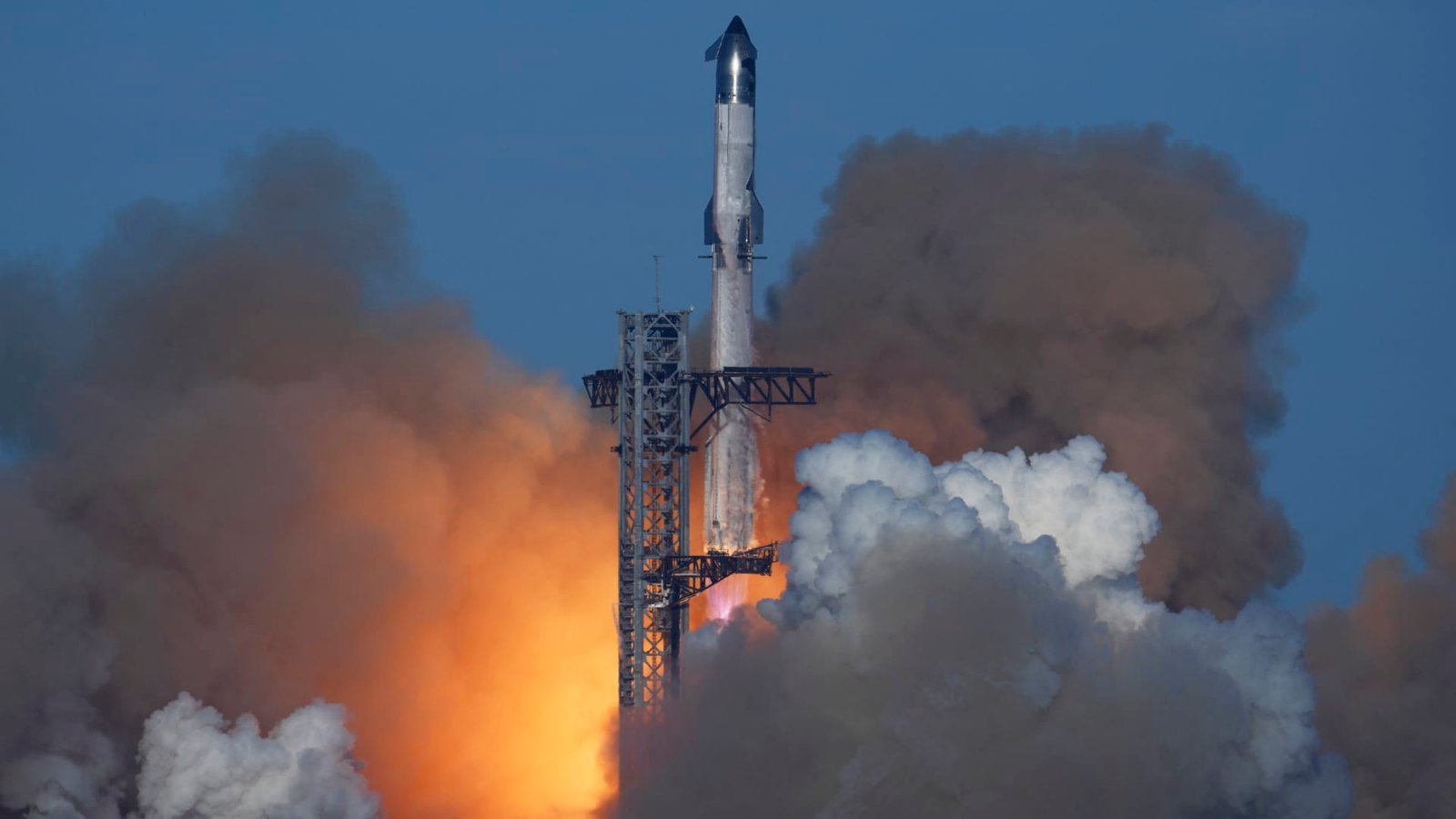SpaceX launched the seventh test flight of its Starship rocket on Thursday but lost communication with the upper stage of the rocket that continues into space. The company’s webcast showed data stopped transmitting from Starship about nine minutes into the launch. SpaceX’s senior manager of quality systems engineering, Kate Tice, confirmed the loss of the ship. The company stated that the ship broke up during its ascent burn and that they would review data to understand the root cause. Initial data indicated a fire near the tail end of Starship, leading to its destruction.
After losing communication, social media users posted photos and videos of fireballs in the sky near the Caribbean islands, likely debris from the rocket reentering the atmosphere. SpaceX reported that Starship debris fell into the Atlantic Ocean within predefined hazard areas established with the Federal Aviation Administration before the launch. The FAA issued a warning to pilots about the falling debris, causing flights to divert and turn around.
SpaceX confirmed that it was assessing the anomaly during the Starship flight. The FAA typically grounds rockets after midflight failures, requiring companies to investigate and implement corrective actions before issuing a new launch license. The FAA stated that there were no reports of injuries or property damage from Starship debris.
Starship launched from SpaceX’s private “Starbase” facility near Brownsville, Texas, with the Super Heavy booster successfully returning to land at the launch site. The rocket carried 10 “Starlink simulators” in its payload bay for testing capabilities needed to deploy larger Starlink satellites. Before losing communication, Starship was set to reach space, travel halfway around the Earth, and splash down in the Indian Ocean.
SpaceX aims to push development further with each flight, testing additional Starship capabilities like heatshield tiles and reentry trajectory. Starship is crucial to SpaceX’s plans, being the tallest and most powerful rocket ever launched. The rocket system has undergone six spaceflight tests since April 2023, with the latest flight featuring a second-generation version of the vehicle, “Block 2.”
Starship, standing 403 feet tall when fully stacked on the Super Heavy booster, is powered by liquid oxygen and liquid methane, requiring over 10 million pounds of propellant for launch. The rocket system is designed to be fully reusable and is integral to SpaceX’s goal of flying cargo and people beyond Earth, including NASA’s Artemis moon program.




